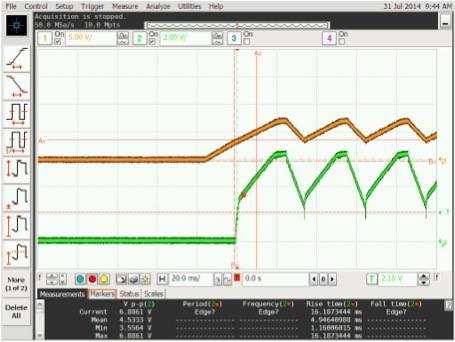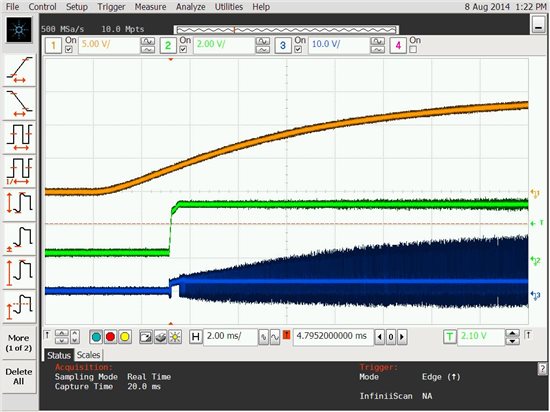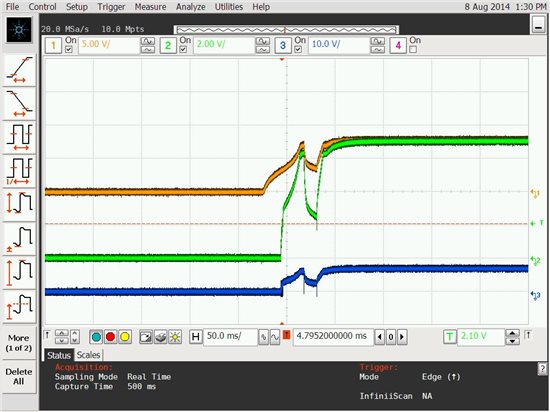We use the TPS62172 with 30uF on Vin, a 2.2uH inductor, and 20uF of capacitance after the inductor. FB is grounded and EN is tied to Vin. The input voltage is 15V. We appear to be getting some oscillations in the output voltage at temperatures around 85 deg C during our crowbar tests, where we short the input voltage for 10-15 seconds before releasing the short. Not all units exhibit the oscillations. Even those units that oscillate do not oscillate after every crowbar test. We current limit the supply to 100mA for the crowbar test. Our "normal" load is roughly 20mA.
The during oscillation, the output voltage is between 6.3V and 2.5V, roughly. Any idea what can cause this oscillation? Is it related to the rise time of the input voltage? How do we prevent the oscillation? We do not see any oscillations when the supply is turned on, oscillations only occur on power up during the crowbar test.
Thanks.
KTM




